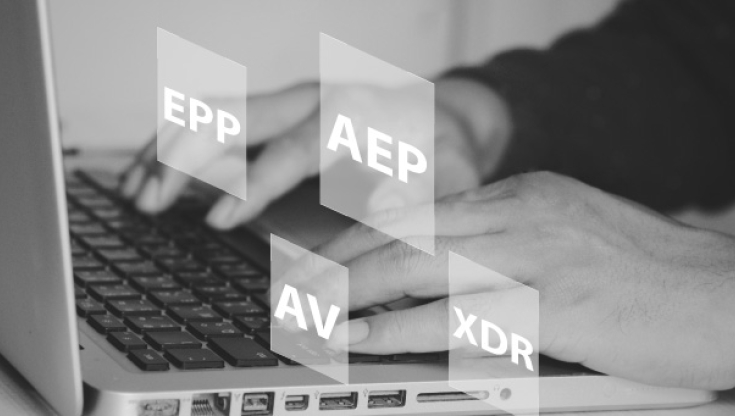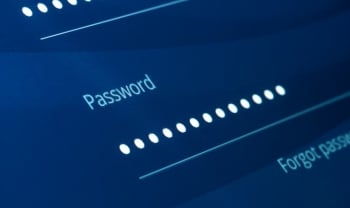A Timeline of the Top 15 Cybersecurity Acronyms & Abbreviations

At WatchGuard, we’re all about security simplified. But living this mission becomes challenging when we constantly face a barrage of information technology (IT) acronym soup. Whenever I read the latest blog post or I hear the latest cybersecurity news, one of those dreaded acronyms inevitably appears.
In IT, the acronyms are prolific. So, to simplify things, I thought I’d look back at the history of the most popular acronyms in the cybersecurity industry and give you a little more context. Because who knows what the coming months and years will bring?
The first basic Cybersecurity Acronyms (1950 - 1995)
Going back to basics, let’s start with some terms.
1. AI (artificial intelligence) – 1956
Today, AI is a household term and makes global headlines with ChatGPT, among other technology evolutions. The term "AI" was defined by Dartmouth College researchers in 1956 as "the construction of computer programs that engage in tasks that are currently more satisfactorily performed by human beings because they require high-level mental processes such as perceptual learning, memory organization, and critical reasoning.”
AI may allow computer systems to automatically learn and improve their capabilities based on experience without being explicitly programmed. Potential applications for AI in data analytics are immense, and this also relates to analyzing data for cybersecurity.
With AI, cybersecurity threats that might take days for a human to understand only take minutes. Moreover, algorithms also learn and predict outcomes based on experience and results, lessening the detection time. All said, AI may profoundly impact both malicious and defensive cybersecurity applications.
2. MFA (multi-factor authentication) – 1985
MFA is a security method that requires two or more verification inputs to access an account, file, or system. Usually, MFA security involves a unique digital code or key separate from your password and operates like a secret passphrase or fingerprint to verify your identity.
Not having an MFA can have drastic results, like the Colonial Pipeline ransomware attack in 2021, which caused nationwide gas shortages in the U.S. and was caused by stolen credentials or a leaked password from the dark web.
3. EPP (Endpoint Protection Platform) – 1988
EPP (Endpoint Protection Platform) is a suite of technologies designed to protect an organization’s infrastructure to control known threats, such as traditional malware and even unknown threats. To elaborate, EPDR (Endpoint Protection Detection and Response) continuously monitors endpoints to classify 100% of processes (pre- and post-execution) to detect and respond to attacks and in-memory exploits automatically.
An EPDR system reveals and blocks the strange behaviors of users, machines, and processes while proactively discovering new hacking and evasion techniques and tactics. Now that's sophisticated Endpoint Security.
4. MSP (managed service provider) – 1990
Today, managed services are particularly interesting to small and medium-sized companies, which can dispense with in-house IT support by outsourcing IT requirements to an MSP and thus save costs. Initially, the concept of managed services, which began in the 1990s, was aimed exclusively at large companies. MSP (managed service provider ) or, in other words, the expert channel in your local area that would be happy to help if you don’t have the experience. WatchGuard has a ton of these experts in our MSP community.
5. VPN (Virtual Private Network) – 1993
In the world of business and remote connections, it’s essential to protect your crucial information from the bad guys; a VPN is a must. It’s like a secure pipe for that vital conversation or data share between your network and your employees, or even your grandma across your home network to protect your smart devices, and it can secure your data and people anywhere in the world. A mobile VPN isn’t hard to configure on your firewall (that device your IT provider says you must have).
6. AV (Anti-Virus) – 1995
Advanced cybersecurity threats have doubled in the last 12 months, and malware and ransomware attacks are more innovative, sophisticated, and costly. The endpoint (your laptop or mobile phone) is a favorite target of cybercriminals, with plenty of known vulnerabilities to be exploited and software versions that are often outdated; there are numerous endpoint acronyms related to attacks we can cover. Since WatchGuard acquired Panda several years ago, there’s certainly been a bit of a learning curve for these acronyms in my world. Antivirus (AV) is only the first layer of defense in endpoint protection; these days, only having AV is like driving around on bald tires in the rain.
Acronyms around the turn of the century (1996 – 2005)
7. SOC (Security Operations Center) – 1996
Initially, the Security Operations Center was implemented for Government and Defense organizations, and the significant responsibilities were handling Virus Alerts, Intrusion Detection, and Response. After 2000, monitoring operations were implemented for large enterprises, banks, and Government and Military organizations. The SOC is responsible for protecting enterprises against cyberattacks. Security analysts investigate alerts to determine if they are actual incidents, and, if so, perform incident response and remediation.
8. CVE (Common Vulnerabilities and Exposure) – 1999
CVE is a list of publicly disclosed information security vulnerabilities and exposures. It was launched in 1999 by the MITRE corporation to identify and categorize vulnerabilities in software and firmware. Authorities like MITRE will assign a CVE to a newly discovered vulnerability to make it easier to track and collate information about vulnerabilities across multiple sources that might otherwise name and describe it differently.
WatchGuard takes product security seriously and welcomes working through responsible disclosure with external researchers. By completing the process of becoming a CNA, we can streamline our disclosure process and, ultimately, better protect our customers. Learn more about WatchGuard Product Security Incident Response Team (PSIRT) at psirt.watchguard.com.
9. CTI (Cyber Threat Intelligence) – 2004
For the purposes of Cyber Threat Intelligence, the intention is to apply techniques to prevent undesirable outcomes that might affect the cybersecurity of something we might be responsible for protecting. Some of these techniques come from the following areas: malware signatures, known-bad IP addresses, domain names, and information about current cyberattack campaigns.
10. SIEM (Security Information and Event Management) – 2005
A SIEM collects, aggregates, and analyzes data from security appliances to provide contextual data and alerts to security teams. This functionality is necessary for legacy security deployments relying on an array of stand-alone solutions rather than a converged network security infrastructure.
Latest Cybersecurity Acronyms (2011 – 2019)
11. IAM (Identity and Access Management) – 2011
IAM is a framework of policies and technologies to ensure that the right users (who are part of the ecosystem connected to or within an enterprise) have the appropriate access to technology resources. IAM systems fall under the overarching umbrellas of IT security and data management. Identity and access management systems not only identify, authenticate, and control access for individuals who will be utilizing IT resources but also the hardware and applications employees need to access.
12. MDR (Managed Detection and Response) – 2016
It wasn’t until 2016, when Gartner published their initial market guide where Managed Detection and Response (MDR) was elevated to a standard term. MDR is a much better term than anything we came up with because it better captures the value and the mechanism. The main benefit is that it helps organizations limit the impact of threats without the need for additional staffing. In other words, they are free to TCB instead of worrying about security.
13. ZTNA ( Zero Trust Network Access) – 2018
Also called a software-defined perimeter (SDP), Zero Trust Network Access is an alternative to Virtual Private Network (VPN) for secure remote access. Unlike VPN, ZTNA provides access to corporate resources on a case-by-case basis in compliance with zero trust security policies. ZTNA can be deployed as part of a SASE solution to support the remote workforce of the modern distributed enterprise.
14. XDR (Extended Detection and Response) – 2018
XDR is a term commonly used by acronym-loving IT analysts, it is a system that automatically collects and correlates data at multiple security layers: email, endpoint, server, Cloud, workload, and network. XDR provides threat detection and improved investigation and response times through security analytics or data insights.
15. SASE (Secure Access Service Edge) – 2019
It’s a cloud-based solution that converges network and security functionalities. SASE’s built-in SD-WAN functionality offers network optimization, while the integrated security stack – including Next Generation Firewall (NGFW), Secure Web Gateway (SWG), Zero Trust Network Access (ZTNA), and more – secures traffic over the corporate WAN. According to Gartner (who coined the term), SASE is “the future of network security.”
WatchGuard’s Full Cybersecurity Glossary
Wow, what a mouthful those acronyms there are, but what an important suite of services they include, and I’ve just mentioned a few. I encourage you to explore more in the WatchGuard glossary of cybersecurity terms, or a few more in the list below from various well-known sources. You may also want to check out our free trials if you’d like to try any of the products with catchy acronyms that WatchGuard provides. We look forward to simplifying cybersecurity with you and protecting your business with our Unified Security Platform® architecture and our super-smart, cyber-aware, acronym-savvy channel partners!


